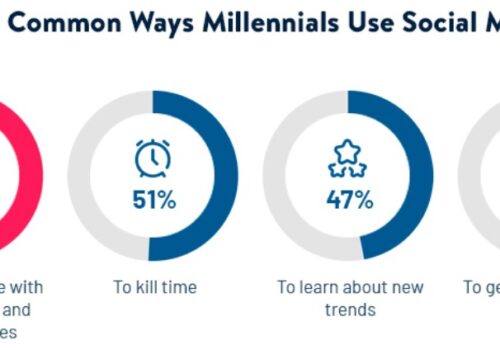College is a significant financial and emotional investment for many individuals. However, not everyone who attends college completes their studies on time.
Let’s take a closer look at the numbers and facts surrounding college graduation. It’s an important moment in many people’s lives, and we’ll explore what it means and the trends that come with it.
| Category | Statistic |
|---|---|
| Associate’s Degree Earned Annually | 1.01 million |
| Bachelor’s Degree Earned Annually | 1.98 million |
| Master’s Degree Earned Annually | 820,100 |
| Doctorate Degree Earned Annually | 184,070 |
| Adults in the US with Associate’s Degree or More | 42% |
| Annual College Dropout Rate | Almost 1 million |
| First-Generation Student Dropout Rate | 75% |
| Graduation Likelihood (Top vs. Bottom Percentile Students) | 5 times higher for top 75th percentile |
| Full-time vs. Part-time Students Graduation Rate (in 6 Years) | 6 times more likely for full-time students |
| 2022 Graduation Rate: Asian Students | Over 60% |
| 2022 Graduation Rate: White Students | Over 40% |
| 2022 Graduation Rate: African American Students | 25% |
| 2023 Completion Rate in Public Two-Year Colleges | 43.1% |
| 2023 Overall Six-Year Completion Rate | 62.3% |
| Employment Rate for New College Grads within 6 Months | 65% |
| Average Annual Earnings for College Grads (Ages 22-27) | $44,000 |
| Employment Likelihood with Bachelor’s Degree vs. High School Diploma | 50% better chance |
| Graduation Rate at Four-Year Institutions: Women vs. Men | 66% for women, 59% for men |
| 6-Year Graduation Rate for First-Time, Full-Time Undergrads (2014 Start) | 64% |
| 6-Year Graduation Rate by Gender (2014 Start) | 67% for females, 60% for males |
| Graduation Rates by Race (Cohort Entry Year 2010) | Asian 74%, White 64%, Hispanic 54%, Black 40%, American Indian/Alaska Native 39% |
| College Enrollment Rate Decrease (2010-2021) | From 41% to 38% |
| 4-Year Graduation Rate (2022) | 41% |
| 6-Year Completion Rate for Four-Year Degrees (2022) | 60% |
| 2022 Graduation Rates by State and Race (Massachusetts, Colorado, New Jersey) | Varies by state and race |
| 2023 College Graduates by Race/Ethnicity | White/Caucasians 59.10%, Latino/Hispanic 13.10%, Black/African American 11.10%, Pacific Islanders/Asians 6.60%, Alaska Native/American Indians 0.60%, Two or more ethnicities 2.90% |
| 2023 Bachelor’s Degree Holding Rate: Young Men vs. Young Women | Young men 9% less likely |
Some Interesting Facts About College Graduations in the United States:
Image credit: Pexels
- An associate’s degree is earned by 1.01 million people each year, while a bachelor’s degree is earned by 1.98 million people.
- Each year, 820,100 people receive a master’s degree and 184,070 people receive a doctorate degree in higher education.
- An associate’s degree or more is held by 42 percent of adults in the United States. Every year, almost a million students drop out of college.
- First-generation students account for 75 percent of those who drop out.
- Pupils within the top 75th percentile of their course have a 5x higher chance of graduating than those in the bottom percentile.
- Full-time pupils are 6 times more likely than part-time students to graduate in six years.
- Over 60% graduation rate for Asian students and over 40% for white students in 2022, with 25% of the graduating class being African American.
- Public two-year colleges had a 43.1% completion rate (2023).
- 56% of Americans thought college was no longer worth the investment (2023).
- The overall six-year completion rate across all schools was 62.3% (2023).
College Graduation Statistics 2025

Figures on College Grads by Demographics
- White men have the largest percentage of college graduates.
- Males account for 80 percent of computer science academics & 78 percent of computer engineering students.
- American Indian/Alaska Native graduates account for only 0.6 percent of all graduates, the least of any race or ethnicity.
- White people account for over 60 percent of all college graduates.
- Latino or Hispanic graduates account for 13 percent, Black & Native American graduates account for 11%, and graduates from Asia or the Pacific account for 6.6 percent.
- Within five years, 23% of all individuals who join at the age of 18 or below will graduate. With 488k college grads each year, California has the maximum number of college graduates.
- 59.10% of college graduates were White/Caucasians (2023).
- 13.10% were Latino/Hispanic (2023).
- 11.10% were Black/African American (2023).
- 6.60% were Pacific Islanders/Asians (2023).
- 0.60% were Alaska Native/American Indians (2023).
- 2.90% were of two or more ethnicities (2023).
- Young men were 9% less likely to have a bachelor’s degree than young women (2023).
- 25% of Hispanic college students in the U.S. experienced discrimination (2023).
- 52% of Hispanic students considered stopping college for at least one term (2023).
FAQs
⏳ What is the average time it takes to graduate from college?
On average, it takes about four years to complete a bachelor's degree program. However, some students may take longer due to various factors.
📚 What factors influence college graduation rates?
Factors that can influence graduation rates include the type of institution, student demographics, financial resources, and academic preparedness.
🎓 What are the different types of college degrees available for graduation?
There are various types of degrees, including associate's, bachelor's, master's, and doctoral degrees, each requiring different durations of study.
🏫 How can colleges and universities improve graduation rates?
Institutions can improve graduation rates by offering support services, financial aid, academic advising, and addressing barriers to completion.
💼 What are the benefits of earning a college degree?
Earning a college degree can lead to better job opportunities, higher earning potential, and personal growth and development.
🎒 What role does student support services play in improving graduation rates?
Student support services, such as academic advising, counseling, and tutoring, can significantly contribute to improving graduation rates by assisting students in overcoming challenges.
Quick Links:
- Voice Search Statistics
- Mobile eCommerce Statistics
- TikTok Statistics
- Logo Statistics
- Blogging Statistics
Conclusion: College Graduation Statistics 2025
Graduation statistics provide us with the number of students who successfully complete their college degrees. These figures are crucial in helping us assess the effectiveness of educational programs and their impact on individuals and society.
While most college students aim to graduate, this isn’t always the case. Statistics on university graduation underline the significance of obtaining a degree and whether it is worthwhile investing time and effort.
To improve graduation rates, there are efforts to provide students with support services and financial aid. A college degree often opens up better job prospects and leads to personal growth.
In conclusion, statistics on college graduation provide valuable insights into the world of education and its outcomes.
Sources:
Education Data, Forbes, Think Impact, US News, Best Colleges






